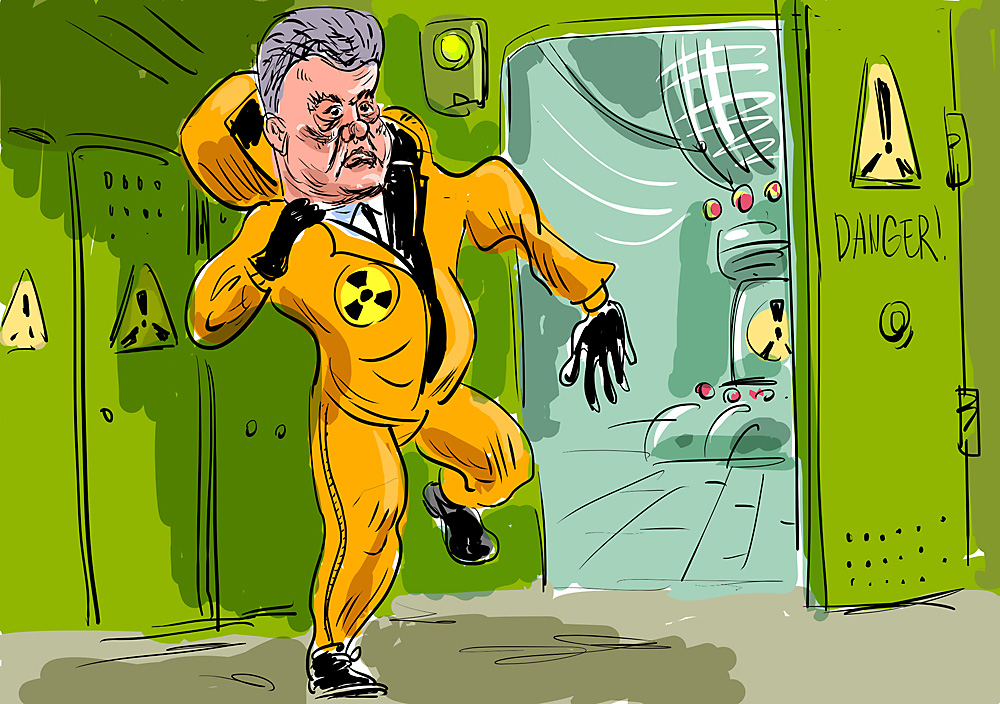Why Ukraine is at risk of forgetting the lessons of Chernobyl

Drawing by Iorsh
Nuclear power is safer today but the industry will not forgive political bias or negligence. Thirty years ago this month there was a disaster at the nuclear plant near the Ukrainian city of Chernobyl. A blast destroyed the fourth reactor, releasing radiation into the environment.
But in spite of the mistakes made by the Soviet management, nuclear scientists took the only reasonable decision available to them and by the fall had built a sarcophagus that made a further release and further spread of radiation impossible. What happened at Chernobyl was a lesson for the world.
Much has changed in the global nuclear power industry over the past three decades. Nuclear power plant safety regulations have been tightened, improved reactors have been developed, with active and passive safety systems, and new power units that meet modern safety requirements have been developed. However, as the accident at Japan’s Fukushima power plant in 2011 shows, the safe operation of a nuclear power station requires extreme diligence and accuracy in operation.
Ukraine moves to step up power output
Today, some Russian experts are particularly concerned about what’s happening in Ukraine’s nuclear industry. Ukraine inherited from the USSR modern nuclear power plants and a competitive nuclear energy sector, which obviously needed to be properly maintained and serviced.
However, because of political turbulence and the overall administrative and economic degradation that has affected Ukraine in recent years, many questions have been raised by experts about the quality of the operation of nuclear facilities there. And there have been claims that some steps that have been taken in the field of nuclear energy in Ukraine are as dangerous as the procedure that was carried out on Chernobyl’s fourth reactor unit 30 years ago, which led to disaster.
Energoatom, the company operating Ukrainian nuclear reactors, announced plans in mid-March to upgrade its nuclear power plants in order to increase the power output of 13 VVER-1000 reactor units to a level of 110pc of the nominal value.
In addition, plans were announced to introduce load-following mode at nuclear power units, i.e. the capability to reduce and increase the power output of the units quickly and as many times as the operator desires (a rapid change in the power output is a very difficult and potentially dangerous process for a nuclear power plant).
Aware of the need to involve experts, Ukraine turned to Westinghouse, an American company held in high regard for its hi-tech nuclear culture. The problem, however, is that the American company is not overly familiar with the technological features of the VVER reactor as it is Soviet and Russian technology, while the Ukrainian reactors were constructed in the USSR.
U.S. and Russian fuel don’t mix
But the main designer of these reactors, the Russian experimental design bureau Gidropress, which knows the intricacies of its reactors down to the smallest detail, was not invited to participate in the modernization program. This decision has already led to a number of problems in the case of the replacement of Russian fuel with an American-made product, or mixing them.
For instance, American fuel was loaded into Soviet reactors at the nuclear power units at the Temelin nuclear power station in the Czech Republic, but because the Westinghouse reactor fuel assembly (FA) was unsuitable, it was decided to give it up and return to Russian fuel.
Ukraine went further and loaded Westinghouse FA into the reactor of the South Ukraine nuclear power plant (located near the city of Yuzhnoukrainsk, around 220 miles south of Kiev), alongside Russian TVEL FA (and without the involvement of Russian specialists).
As experts had warned, serious problems with the deformation of FA rod arrays occurred during refueling, and as a result, the South Ukraine nuclear power plant also had to remove this fuel. But in spite of this experience, Ukrainian politicians have decided to continue to buy Westinghouse fuel until 2020.
Safety: Is Ukraine doing enough?
However, adopting load-following mode at nuclear plants and overseeing their modernization are even more technologically vulnerable processes than replacing fuel. Recently, Kiev hosted a round table called “Nuclear Energy in Ukraine: Load-Following – Blind Risk or Secure Economic Feasibility?” which discussed the dangers of daily load-following at the power units of nuclear power plants in order to adjust the power output of integrated power systems.
In 2015, such an experiment was carried out at power unit No 2 of the Khmelnitsky nuclear power plant. However, according to Yury Sheiko, who is Energoatom’s production director, there should be 10 times as many experiments to achieve a reliable result.
In turn, Konstantin Uschapovsky, an adviser to the Ukrainian prime minister, noted that the safe introduction of load-following mode at nuclear power plants requires significant funds for their modernization. But Ukraine does not have sufficient finance to do this.
If, however, in the interest of economic advantage, the Ukrainian nuclear power plants introduce load-following mode without proper modernization, such an experiment has the potential to recreate the Chernobyl disaster, where unwarranted load-following caused the explosion in the fourth unit.
Andrei Retinger is a Russian journalist and an expert in the field of nuclear energy.
The opinion of the author may not necessarily reflect the position of RBTH or its staff.
Subscribe to get the hand picked best stories every week
All rights reserved by Rossiyskaya Gazeta.
Subscribe
to our newsletter!
Get the week's best stories straight to your inbox
